You may be thinking of purchasing some resistance bands, but before you go ahead and place your order, you need to understand which size bands to choose, else you’ll waste money on resistance bands that are incorrectly sized and aren’t any use to you.
So which resistance band is right for you? Well, the colour is the giveaway here, as the colour commonly represents the resistance of the band.
Let’s start with a few basics before we talk about the different colours and what they represent.
Table of Contents
How is each coloured resistance band different?
It may not be evident to those of you who have never used a resistance band before, but each resistance band is actually the same length.
It’s not the length of the band that gives each resistance band a different resistance level, but the thickness of the band.
To make it easy to understand which band you need, manufacturers give each band a different colour to help identify what thickness (and therefore resistance level) the band is.
Understanding the different resistance band types
If each colour represents a different resistance level, the logical thing to do would be to decide which exercises you want to use a resistance band for, and then purchase the relevant resistance band, right?
Not just yet!
There are three different types of resistance bands, so before you jump into looking at the different colours available from a given manufacturer, you need to pick which of the band types you’ll need first.
In simple terms, resistance bands types fall into these different categories:
#1 Flat loop resistance bands
These are the most common resistance band you will have encountered, most likely in your local gym.
As the name states, they are a single continuous flat loop, and their most common use is to help assist you with bodyweight exercises, such as pull-ups and dips.
These are the types of resistance bands I couldn’t live without!
#2 Tubular resistance bands
These are the bands you see with handles or attachments on each end of the band, with the band looking like a hollow tube shape.
These are the types of bands you may use to perform a bodyweight resistance workout, such as performing squats and rows.
I imagine people find these bands useful for getting a resistance workout in their bedroom or a hotel room – not for me personally!
#3 Yoga bands / Loop bands
I almost forgot to consider this 3rd type, but it’s the key one you need to watch out for.
These bands are used for yoga, rehabilitation and mobility exercises, but beware because first-time buyers could easily get these confused with flat loop bands, especially when buying them online.
These bands are tiny and thin, and much cheaper than the other resistance bands. They’re essentially a really fat elastic band which you could easily scrunch up and put in your pocket. If you’re shopping for flat loop resistance bands online and find some that are surprisingly cheap, make sure they aren’t these bands instead!
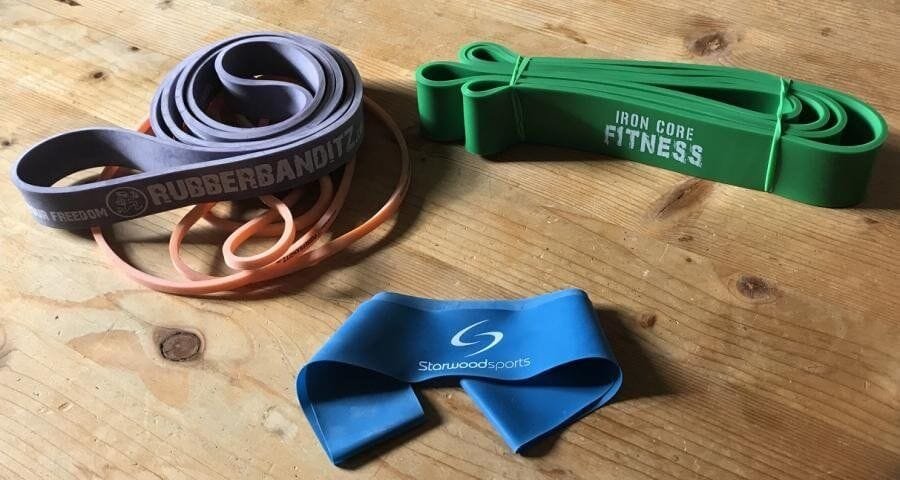
In the above photo, you can see Rubberbanditz and Iron Core Fitness flat loop bands next to a blue yoga band by Starwoodsport.
For further guidance, here’s an infographic from one of our other posts that compares flat loop resistance bands to tubular resistance bands.
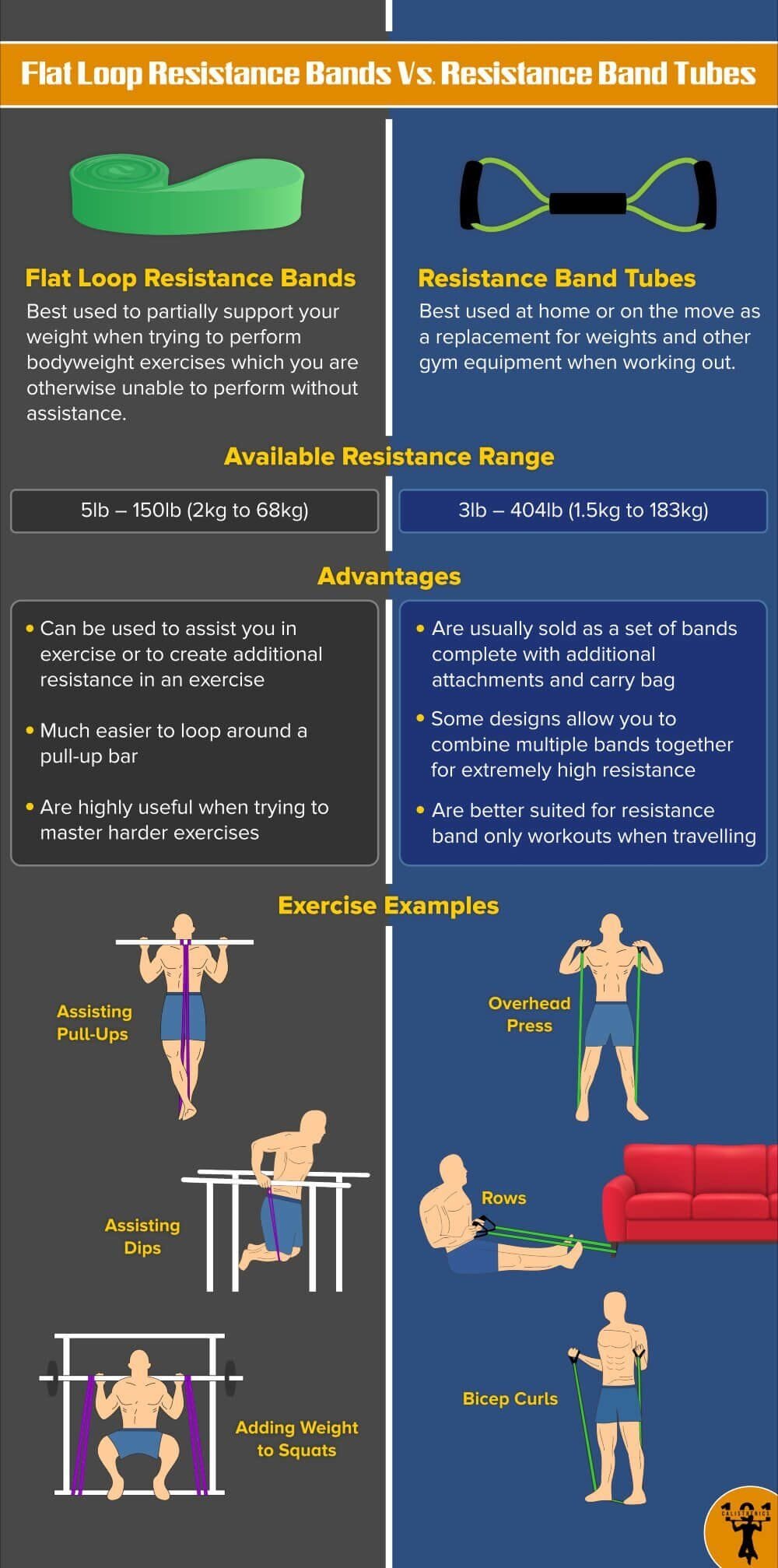
So which coloured resistance band is best for me?
OK, so now the real question!
Because tubular bands are usually sold as a kit which includes all the different coloured bands, you don’t need to consider which coloured band has what resistance.
Instead, I’m going to assume 95% of the people reading this are looking to purchase flat loop resistance bands, so I’ll use those types of resistance bands as my examples here.
In our Resistance Bands Buyers Guide, we recommend bands by Iron Core, Pullup & Dip, (and for any American readers) Rubberbanditz. Let’s take a look at the different colours they offer below:


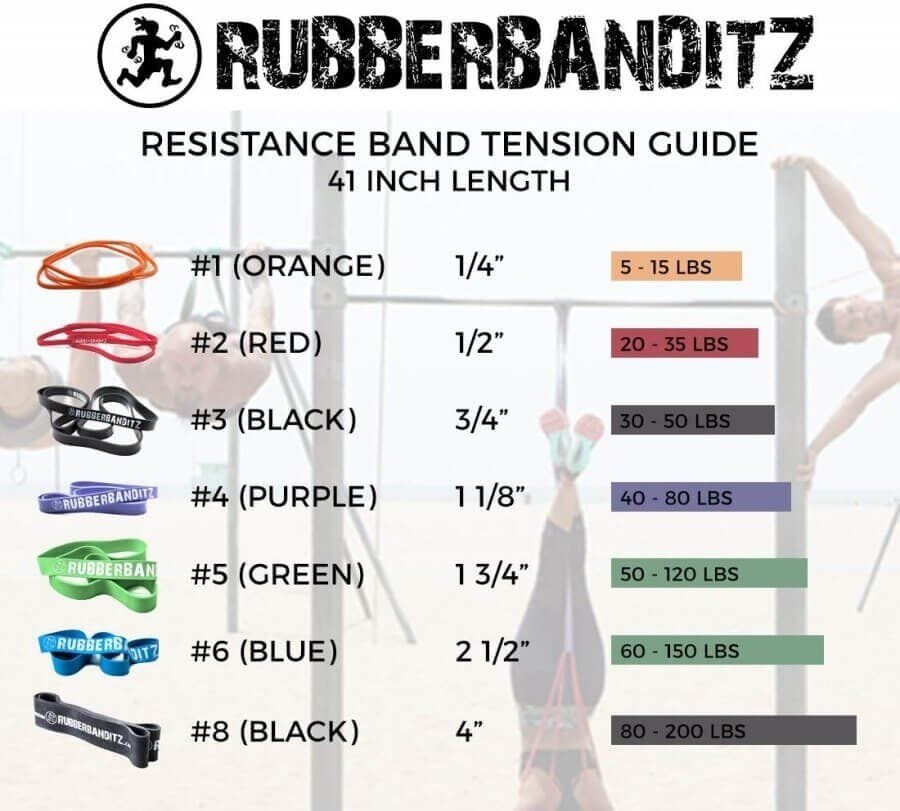
Notice how they mostly follow the same colour pattern, except that Pullup & Dip confusingly uses blue as a medium resistance band, and Rubberbanditz use black a second time for their heaviest band?
If you shop for any of the above, you’ll notice that most sellers recommend a set of resistance bands, as you’ll need different bands for different exercises. Don’t forget; your aim is to improve at an exercise and move on to a lighter band as you get stronger.
But for those just shopping for a single resistance band to help them with their pull-ups, then Iron Core has put together a helpful chart below to help you pick the right coloured band for you:
Note: Two colours in a single square indicates that you should use two resistance bands together two combine the total resistance level.
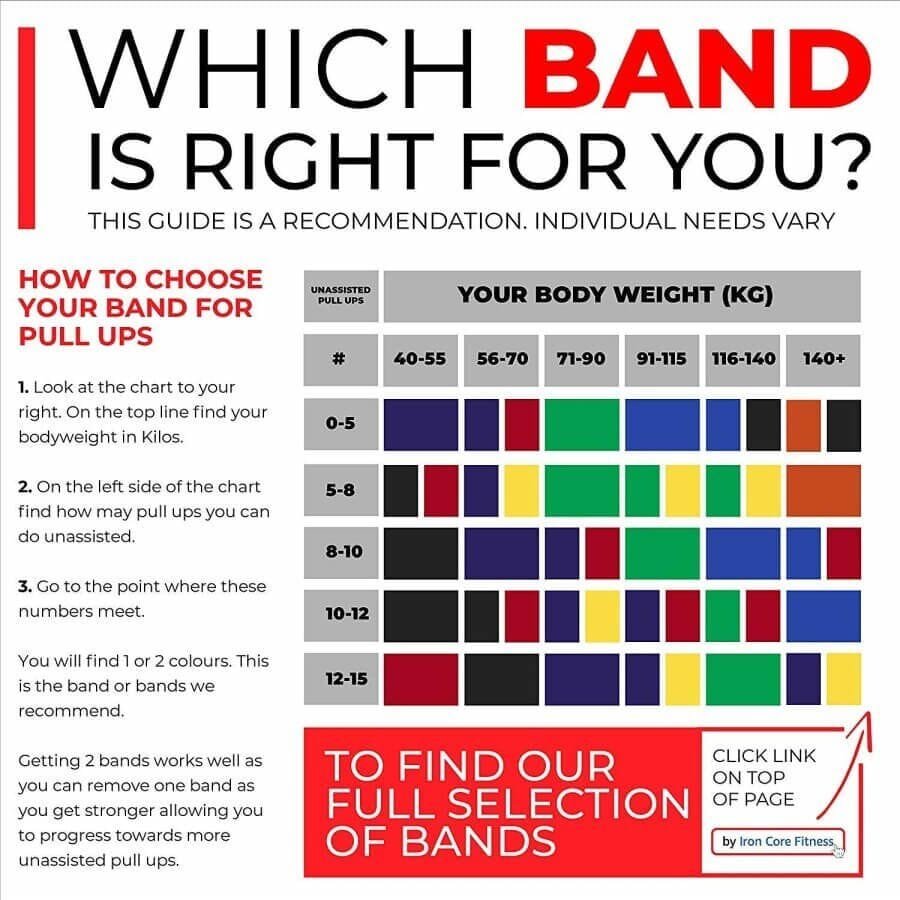
To help you read the above chart, I’m around 75kg, and I can complete 12-15 pull-ups without a band (don’t forget you should only be considering clean-form pull-ups!). Using those numbers, the guide says I should use the purple band if I want help increasing my numbers.
Interestingly, the purple Rubberbanditz resistance band is one of my most frequently used bands. Still, I’d personally prefer the black band for training pull-ups, as the purple band gives me a little too much assistance for my liking.
Of course, this is the key reason why I recommend buying a set of bands. Although sellers may recommend a particular colour for a specific exercise, it will often come down to personal preference. Having a choice of bands available makes the additional spend well worthwhile, in my opinion.

Founder of www.calisthenics-101.co.uk. Training calisthenics since 2012.
Currently working on: 30 second one-arm handstand, muscle-up 360, straddle planche.
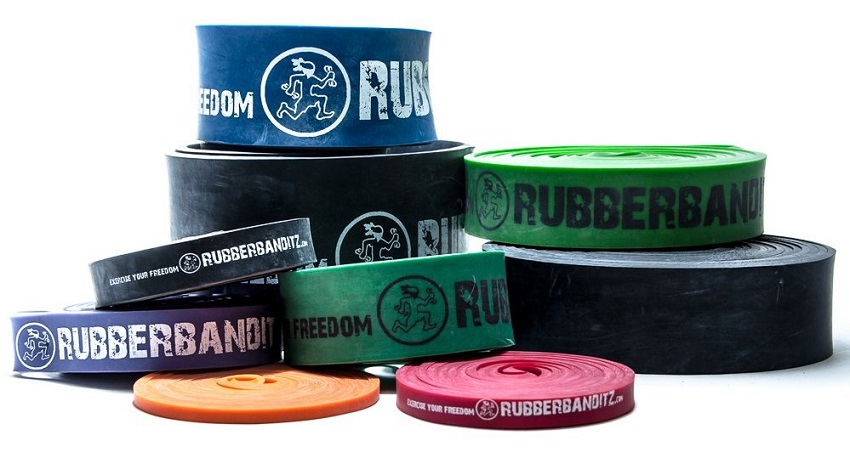
Very well written post. It will be beneficial to anyone who uses it, as well as myself. Keep doing what you are doing – can’t wait to read more posts.